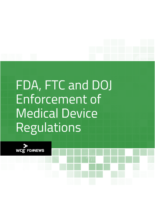
Home » Document to Avoid 483s, Don’t Just Conduct CAPA Investigations, Expert Says
Document to Avoid 483s, Don’t Just Conduct CAPA Investigations, Expert Says
Failure to establish corrective and preventive action (CAPA) plans tops the list of devicemakers’ FDA inspection observations year after year, but the situation is more nuanced than you might expect, according to one regulatory expert.
Since 2018, the number of Form 483s citing lack of or inadequate CAPA procedures — failure to comply with FDA regulations at CFR 820.100(a) — has consistently been 20 to 25 percent of all observations per year. But failure to follow the very next subparagraph, CFR 820.100(b), by documenting CAPA activities has compounded CAPA problems by an additional 5 to 8 percent each year.
But what’s the difference between the two observations and can a devicemaker be cited for one but not the other or do they always deliver a double whammy?
“If CAPA procedures have not been adequately defined to meet all the regulatory requirements or the implementation has not been appropriately followed, the observation is likely to cite procedural or documentation deficiencies,” says Kristen Grumet, senior vice president, Regulatory Compliance at Greenleaf Health. If a devicemaker’s CAPA system appears to be compliant, it still can be dinged for lacking records that would prove that compliance.
Companies might receive a documentation observation even though the CAPA procedures and defined process are fully compliant because “the CAPA documentation may not support or provide objective evidence that the procedural requirements were followed, or perhaps assumptions have been made within the CAPA documentation that are not adequately supported or justified,” Grumet, a former FDA field investigator, told FDAnews.
Related Topics
Upcoming Events
-
07May
-
14May
-
30May
